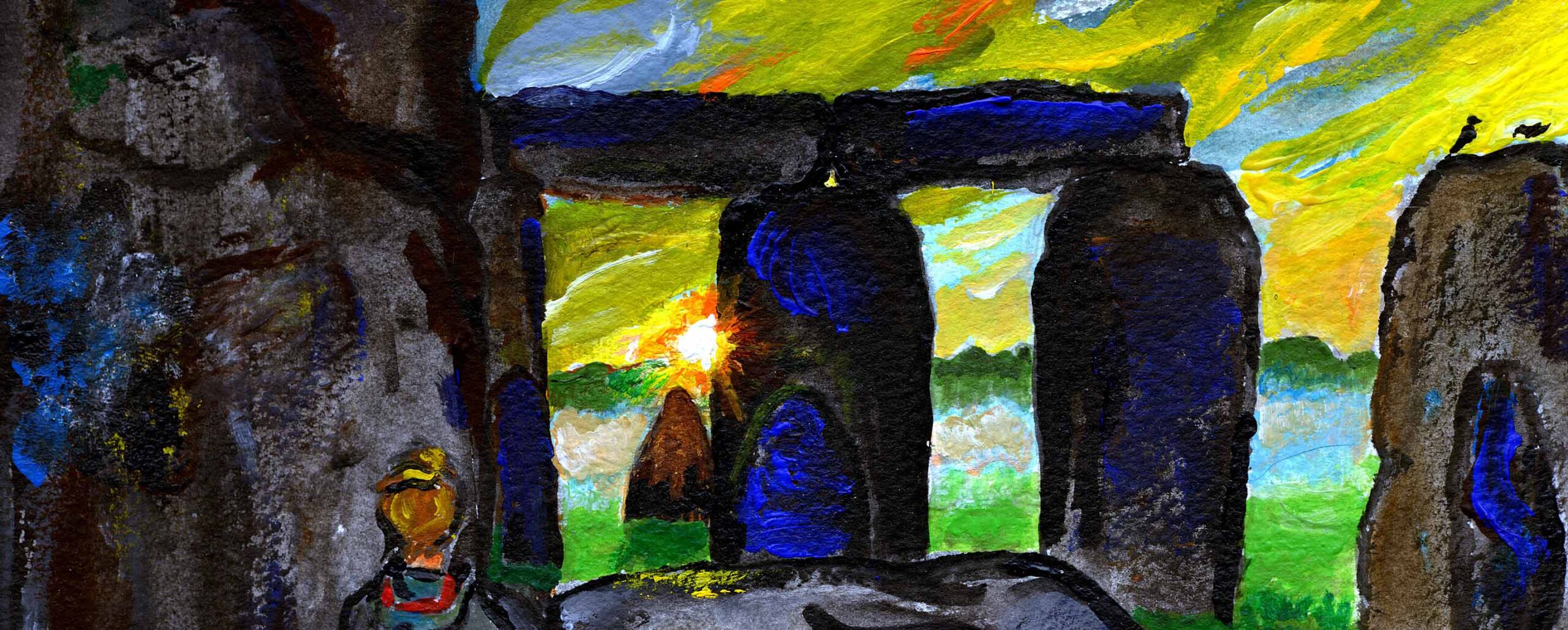Today is Rosh Hashanah, “head of the year,” first day of the Hebrew year. Actually it began at sundown on the previous evening. Here is this evening’s scene.

See the end note about enlarging illustrations.
The Fortran program by which I draw horizon scenes (I call it HO.FOR – the more often you use something, the shorter needs to be your handle for it) can play with many kinds of variation, obeying what it reads from an instruction file. A few days ago I gave an example of a scene at the same time of day from different locations on Earth. Those were the sort-of-standard USA location of 40° north 90° west, and a southern-hemisphere one, 35° south 160° east, between Australia and New Zealand.
An infinite variation is to choose different states of the day: times in hours and minutes before or after sunrise or sunset, or by the local clock, or by Universal Time.
Another is to choose levels of the amount of detail shown, usually much less. The more I allow to show, the more trouble I’ll have mouse-shifting labels from on top of each other!.
The scale – centimeters per degree – can be enlarged, or the pictured area made smaller, also to reduce density.
Any mapping of a piece of the celestial sphere onto a flat surface has to use a projection system. HO is azimuthal equidistant. There is a center, like the point you are looking at. I’ve taken to making it 5° below the horizon. This causes the horizon to be convex-upward, suggesting (to me) the sea horizon. Setting it at zero makes the horizon flat, as in most horizon pictures in books. Setting it above the horizon would make that concave; setting it at 90° would imply a circular map of the whole sky.
That’s the altitude of the center. Its azimuth is its position along the horizon. It can be conveniently 90 (due east) for a dawn picture. But can be shifted along to under the most interesting part of the scene, or, say, 189° for a wide low-scale picture of the horizon all the way from east to west.
Here’s the scene simplified, dim constellations and many other details omitted, at half the previous scale so as to stretch around half of the horizon, with the center under the south instead of the west, and by 10° so as to remind us more strongly that we float on a planet.

__________
This weblog maintains its right to be about astronomy or anything under the sun.
ILLUSTRATIONS in these posts are made with precision but have to be inserted in another format. You may be able to enlarge them on your monitor. One way: right-click, and choose “View image” or “Open image in new tab”, then enlarge. Or choose “Copy image”, then put it on your desktop, then open it. On an iPad or phone, use the finger gesture that enlarges (spreading with two fingers, or tapping and dragging with three fingers). Other methods have been suggested, such as dragging the image to the desktop and opening it in other ways.
Sometimes I make improvements or corrections to a post after publishing it. If you click on the title, rather than on ‘Read more’, I think you are sure to see the latest version. Or you can click ‘Refresh’ to get the latest version.

Thanks for the post! Get well soon!